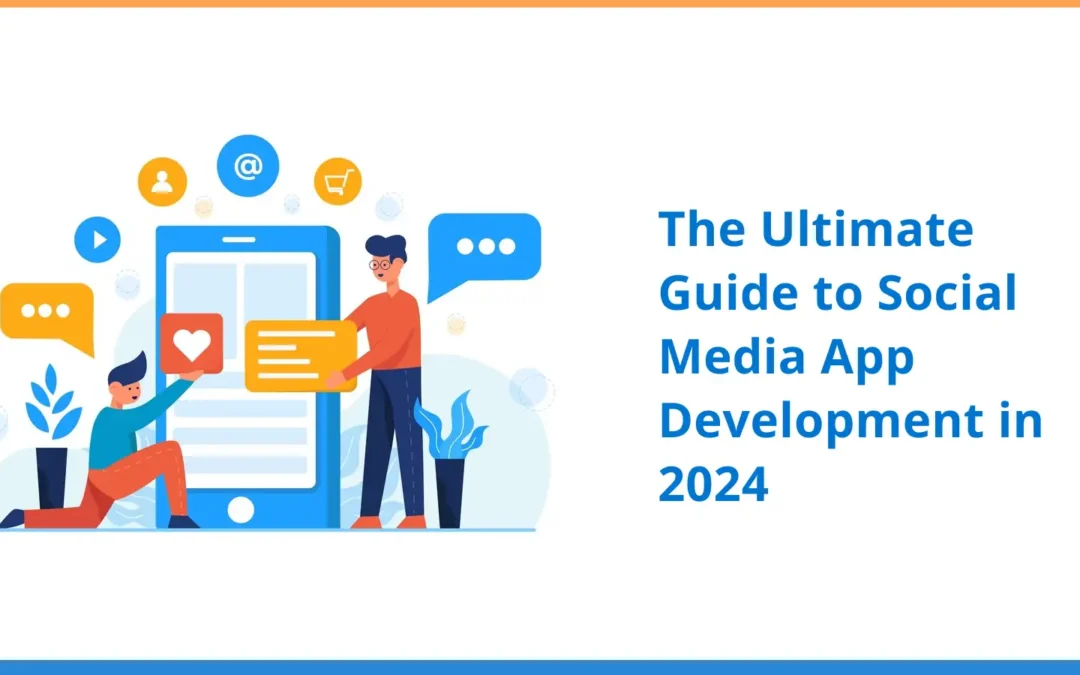1. Understanding Your Niche and Audience

The social media landscape is a crowded one. To make your mark, you need a clear vision and a well-defined target audience. Here’s where to begin:
- Identify Your Niche: What sets your app apart? Will it cater to a specific profession, hobby, or age group? A niche focus allows you to tailor features and content to a passionate user base.
- Understanding User Needs: Conduct thorough market research to understand your target audience’s pain points and online behavior. What are their frustrations with existing platforms? How can your app fill a gap in the market?
2. Crafting the Blueprint: Features and Functionalities

With a clear vision for your niche, it’s time to define the features that will bring your app to life. Here are some key considerations:
Core Features:
- User Profiles: Let users create personalized profiles to showcase their interests and connect with others.
- Content Creation and Sharing: Allow users to share text, images, videos, or other content formats relevant to your app’s focus.
- Feed and Discovery: Develop algorithms or curation methods to present users with relevant content based on their interests and past interactions.
- Communication Tools: Facilitate communication within your user base with features like private messaging, group chats, or live streams.
Advanced Features:
- Consider these potential add-ons to enhance user engagement:
- Monetization Strategies: Explore revenue generation options like in-app purchases, subscriptions, or targeted advertising (prioritize user privacy).
- Gamification: Incorporate elements of points, badges, or leaderboards to boost user engagement.
- Augmented Reality (AR) or Virtual Reality (VR) Integration: For niche apps, consider AR/VR features to create unique user experiences.
3. From Wireframes to User Interfaces: Prototyping and Design

Before diving into complex coding, create a prototype to represent your app’s structure and functionality visually:
- Wireframing: Develop basic wireframes to lay out the app’s screens and user interface (UI) elements. The wireframes allow for easy iteration of the design before investing heavily.
- User Interface (UI) Design: Once the structure is finalized, focus on creating a visually appealing and user-friendly UI. Consider current design trends, but prioritize intuitive navigation and clear information hierarchy for optimal user experience.
4. Choosing Your Tech Stack for Development

The tech stack refers to the programming languages, frameworks, and tools used to build your app. The choice depends on several factors:
- App Complexity: Simpler apps utilize frontend and backend frameworks like ReactJS or Django, while more complex platforms require custom solutions to be built.
- Scalability: Choose technologies that can efficiently grow as your user base expands. Cloud-based solutions offer greater flexibility.
- Security: Prioritize robust security measures from the start. User data and privacy are paramount! Utilize secure authentication methods and encryption protocols.
5. Testing and Deployment: The Final Hurdle

Before launching your masterpiece, rigorous testing is essential:
- Internal Testing: Your development team should thoroughly test the app for functionality, bugs, and security vulnerabilities.
- Beta Testing: Invite a small group of users from your target audience to test the app and provide feedback on usability and user experience.
6. App Store Optimization and Marketing: Spreading the Word

Building the app is just half the battle. Here’s how to get users to discover your creation:
- App Store Optimization (ASO): Optimize your app listing with relevant keywords, captivating descriptions, and eye-catching visuals to improve discoverability in app stores.
- Marketing Strategy: Develop a comprehensive marketing strategy. Utilize social media platforms, influencer marketing, or targeted advertising campaigns to reach your niche audience.
7. Continuous Improvement: Learning from User Feedback

The launch of your app is just the beginning. Social media thrives on constant evolution:
- Gather User Feedback: Actively collect and analyze user feedback through surveys, reviews, and support channels.
- Data-Driven Decisions: Leverage analytics tools to understand user behaviour within your app. Use this data to identify areas for improvement and personalize the user experience.
- Security Updates and Maintenance: The digital landscape is constantly evolving, and so are security threats. Regular security updates and maintenance are crucial to protect user data and ensure your app’s functionality.
8. Building a Community: Fostering User Engagement

In the competitive social media landscape, fostering a thriving and engaged community is essential for long-term success. Here’s how to cultivate a loyal user base:
- Content Moderation: Establish clear community guidelines and enforce them consistently to ensure a safe and positive environment for all users.
- User-Generated Content (UGC) Encouragement: Promote and incentivize user-generated content. The promotion can take the form of photos, videos, blog posts, or discussions. UGC fosters a sense of ownership and community among your user base.
- Events and Challenges: Host regular events, contests, or challenges to keep users engaged and coming back for more. The events could be anything from photo contests to live Q&A sessions with industry influencers.
- Community Management: Actively engage with your users. Respond to comments, address concerns, and participate in discussions. It demonstrates that you value your users and their feedback.
- Rewards and Recognition: Implement a system to reward and recognize active users. It could be through badges, leaderboards, or exclusive content access.
The Road to Social Media Success: A Marathon, Not a Sprint

Building a successful social media app requires dedication, agility, and a commitment to continuous improvement. By following the steps outlined above, you’ll be well-equipped to navigate the development process, create a compelling user experience, and foster a thriving online community.
Remember, the social media landscape is dynamic, so be prepared to adapt and iterate based on user feedback and industry trends.
With a clear vision, a user-centric approach, and a focus on building a strong community, your social media app can become the next big thing in the ever-evolving online world.
Bonus Tip: Stay Abreast of Industry Trends

The social media landscape is constantly evolving. Here are some additional pointers to stay ahead of the curve:
- Emerging Technologies: Explore the potential of integrating emerging technologies like artificial intelligence, voice recognition, or blockchain technology to offer unique features and functionalities.
- Social Commerce: Consider incorporating social commerce features, allowing users to discover and purchase products directly within your app.
- Livestreaming: Livestreaming has become a powerful engagement tool. Explore ways to integrate live video features for real-time interaction and content creation.
Additional Resources:
